We use affiliate links to run our site. When you buy through links on our site, we may earn an affiliate commission, without any added cost to you. Learn more
When it comes to iconic Australian wildlife, the kangaroo often takes center stage. Its powerful leaps across the vast Outback landscape have made it a symbol of this remarkable continent.
Yet, lurking in the shadows of kangaroo fame is another intriguing marsupial: the wallaby. To the untrained eye, these two creatures might seem quite similar, but they are not the same species.
In this exploration, we delve into the world of wallabies and kangaroos, unraveling their unique characteristics, habitats, and behaviors to answer the question: What’s the difference between a wallaby and a kangaroo?
Differences Between A Wallaby and A Kangaroo
| Characteristic | Wallaby | Kangaroo |
|---|---|---|
| Size | Generally smaller, up to 3.2 feet (1 meter), excluding tail | Taller, can grow up to 8 feet (2.4 meters) |
| Leg Proportion | Compact legs designed for agility in forested areas | Long legs built for speed and hopping on open terrain |
| Coat Color | Brighter with two to three color variations | Muted colors of brown or gray, more uniform |
| Teeth | Flat teeth for grinding grass, leaves, and fruits, with a single cutting tooth | Curved teeth for slicing grass stalks, with higher crowns |
| Taxonomy | Belongs to various species within the family Macropodidae | Also belongs to the family Macropodidae, with four main species (red, eastern grey, western grey, antilopine) and more species overall |
| Habitat Preference | Forested areas | Open treeless areas |
| Maximum Weight | Up to 45 pounds (20 kilograms) | Up to 200 pounds (90 kilograms) |
| Main Diet | Grass, leaves, and fruits | Leaves and grass |
Funny Facts About The Kangaroos
1. Taxonomy and Classification
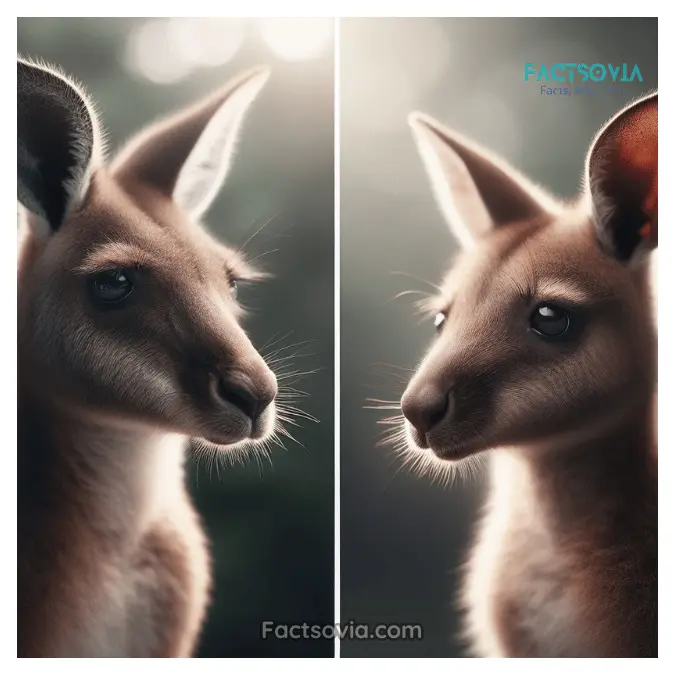
To comprehend the differences between wallabies and kangaroos, it’s essential to start with their taxonomy.
Both belong to the family Macropodidae, which encompasses marsupials known for their powerful hind legs and distinctive hopping locomotion. Within this family, they are further divided into genera and species.
Kangaroos
Kangaroos are classified under the genus Macropus, which includes four species: the Red Kangaroo (Macropus rufus), Eastern Grey Kangaroo (Macropus giganteus), Western Grey Kangaroo (Macropus fuliginosus), and the Antilopine Kangaroo (Macropus antilopinus).
Among these, the Red Kangaroo is the largest and most well-known, often reaching heights of up to six feet.
Wallabies
Wallabies, on the other hand, encompass a broader range of species distributed among several genera, including Macropus, Thylogale, and Dendrolagus.
Unlike kangaroos, wallabies are generally smaller in size and exhibit greater diversity in their appearance and habits.
Some well-known wallaby species include the Agile Wallaby (Macropus agilis), Swamp Wallaby (Wallabia bicolor), and the Tree Kangaroo (Dendrolagus spp.).
2. Difference in Size:
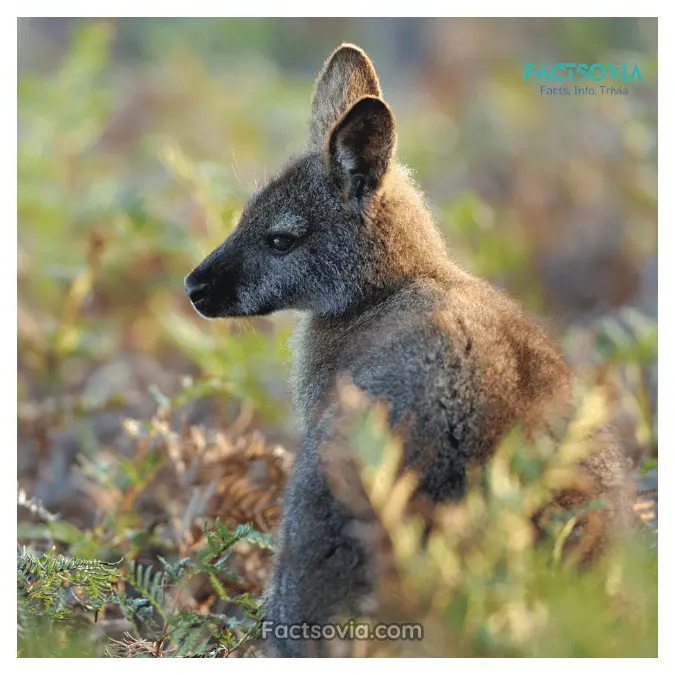
One of the most noticeable distinctions between wallabies and kangaroos is their size.
Kangaroos are typically larger and more robust, with some species reaching staggering heights of over six feet and weighing up to 200 pounds.
In contrast, wallabies are more petite, with most species averaging between 12 and 24 inches in height and weighing anywhere from 5 to 50 pounds.
This size difference is not only apparent in their physical stature but also extends to their physical features.
Kangaroos have longer, more powerful hind legs and tails, designed for swift, sustained hopping.
Wallabies, in contrast, have shorter legs and tails, which are better suited for agility in densely vegetated areas.
3. Difference in Coloration and Markings
The coloration and markings of wallabies and kangaroos also set them apart.
Kangaroos tend to have earthy, monochromatic fur in shades of gray, brown, or reddish-brown. Their fur provides effective camouflage in their arid and grassy habitats.
However, some kangaroo species, like the Red Kangaroo, may exhibit a reddish hue, especially in males.
Wallabies, on the other hand, display a more vibrant and varied range of fur colors. Their coats can include shades of gray, brown, and red, often with distinct markings such as stripes or patches.
These variations in coloration are typically linked to their diverse habitats, which include forests, woodlands, and swamps.
4. Differences in Habitat Preferences
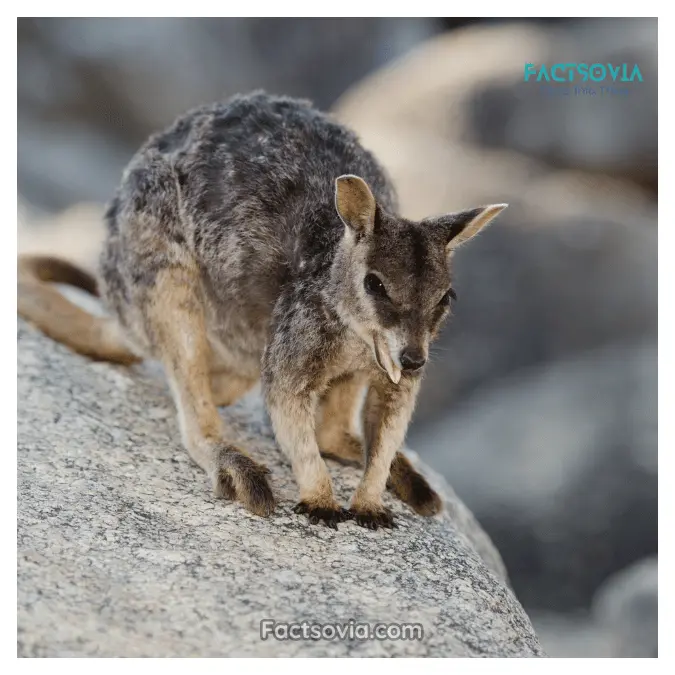
The choice of habitat is another key difference between wallabies and kangaroos.
Kangaroos are primarily associated with open, arid environments such as grasslands and deserts. Their long legs and powerful bodies are adapted for traversing these expansive landscapes, making them superbly suited to the vast Australian Outback.
In contrast, wallabies exhibit greater habitat diversity. While some wallaby species share the same arid habitats as kangaroos, many are adapted to more densely vegetated areas, including forests and rainforests.
The Swamp Wallaby, for instance, thrives in wetlands and dense vegetation, where its agility and compact size are advantageous.
5. Difference in Diet:
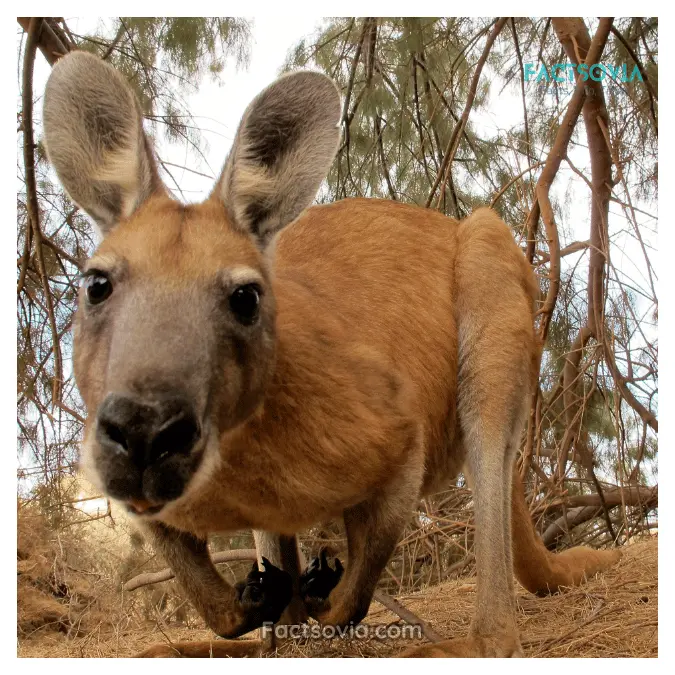
Both wallabies and kangaroos are herbivores, primarily feeding on a diet of grasses and other plant material. However, there are differences in their feeding preferences and strategies.
Kangaroos are often grazers, favoring open grasslands where they can easily access their food source. Their long tongues and powerful jaws allow them to efficiently consume tough grasses.
Wallabies, on the other hand, are more likely to be browsers. Their habitat preferences often lead them to areas with a variety of plant types, including shrubs and small trees.
Their dexterity and smaller size enable them to reach and consume foliage that might be inaccessible to larger kangaroos.
6. Different Social Behavior
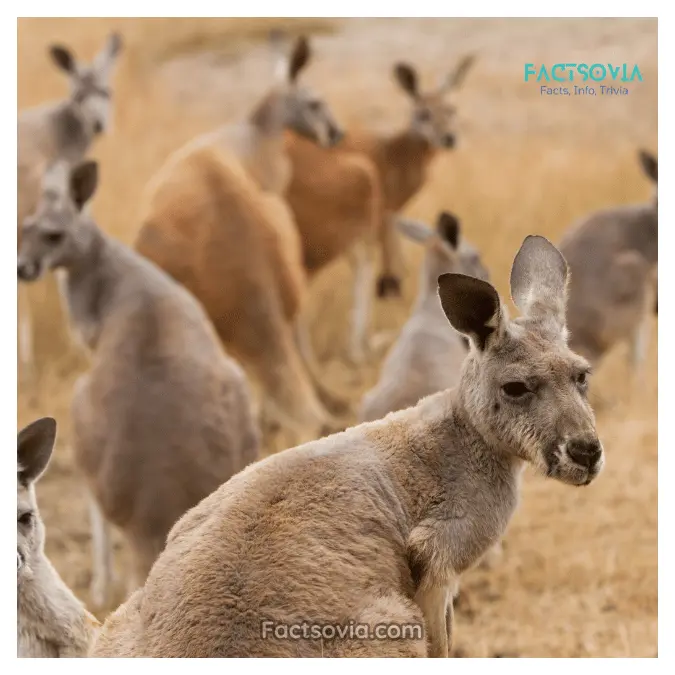
The social dynamics of wallabies and kangaroos vary as well. Kangaroos tend to be more social and gregarious animals, often forming groups known as mobs.
These mobs can range from a few individuals to several dozen, and they provide protection and support in their open habitats.
In contrast, wallabies are generally more solitary, with some species living largely solitary lives and only coming together for mating.
7. Reproduction and Breeding
Reproductive strategies also differ between wallabies and kangaroos.
Kangaroos have a well-defined breeding season, typically timed with environmental conditions, such as increased food availability after rainfall.
During this season, males compete for the attention of females, engaging in boxing matches and other displays of dominance.
After a gestation period of around one month, a female kangaroo gives birth to a single, undeveloped offspring known as a joey, which then spends several months in her pouch.
Wallabies, in contrast, exhibit more variation in their reproductive patterns. Some wallaby species have year-round breeding, while others have more seasonal mating behaviors.
Additionally, wallaby females can give birth to a joey while they still have a previous joey in their pouch. This unique adaptation allows them to better adapt to their diverse habitats and food availability.
Final Thoughts:
In the fascinating world of Australian marsupials, the distinction between wallabies and kangaroos becomes clear upon closer inspection.
While they share a common ancestry within the Macropodidae family, they have evolved to occupy different ecological niches, resulting in variations in size, coloration, habitat preferences, feeding strategies, and social behaviors.
So, the next time you encounter one of these hopping marsupials down under, you’ll be well-prepared to discern whether it’s a kangaroo or a wallaby, and appreciate the distinctive beauty of each.
I hope you found this information facinating. Now, spread the word, and let the world know that there’s more to Australia’s wildlife than meets the eye.
Explore our website for more captivating articles on a wide range of topics, from wildlife and science to culture and technology. The world is a fascinating place, and there’s always something new to discover. Keep the curiosity alive, and keep exploring.
Amazon and the Amazon logo are trademarks of Amazon.com, Inc, or its affiliates.
